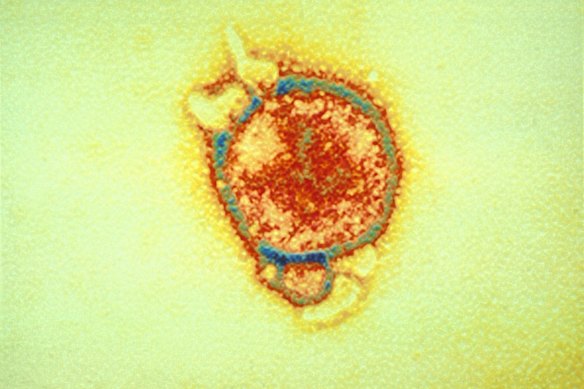Chinese researchers captured 142 Leschenault’s rousette fruit bats in Yunnan province, a hotspot for viral and animal biodiversity that borders Myanmar and Laos, for the study.
While most virus-hunting scientists examine bat poo, this research analysed kidneys, an understudied reservoir of bat disease. The kidneys contained the 20 viruses along with an undiscovered bacteria species and a new parasite.
The two viruses of most concern were called Yunnan bat henipavirus 1 and 2. Henipavirus 1 is particularly close to Hendra and Nipah, with some viral proteins showing between 52 and 57 per cent genetic similarity.
“For Australia, with its history of Hendra outbreaks linked to bat populations, the findings hold special relevance,” said Associate Professor Vinod Balasubramaniam, a virologist at Monash University’s Malaysian campus who wasn’t involved with the study.
“The similarity between Australian rural environments and Yunnan’s orchards near human settlements stresses the urgency of intensified surveillance and biosecurity measures.”
The viruses were discovered in a species of fruit bat called Leschenault’s rousette.Credit: Alamy Stock Photo
Hendra virus emerged from fruit bats in 1994 with the fatal infection of 13 horses and a trainer in Brisbane.
Although henipavirus 1 and 2 are related to Hendra and Nipah, there are key genetic differences in parts of the viruses that bind to and enter cells.
“That’s really important in determining whether that virus is actually likely to be able to infect human cells or other animal cells,” wildlife disease ecologist from Sydney School of Veterinary Science Dr Alison Peel said.
“There will need to be some more laboratory studies on these new viruses to determine the actual risk.”
The new viruses may never arise in humans, particularly if contact between humans and bats is well managed, Holmes said.

Hendra virus spilled into humans and horses from fruit bats.Credit: CSIRO
“Disease emergence, which end up being pandemics, is always about the human-animal interface,” he said. “Bats contain a huge number of viruses. But they’ve had them for aeons. If you go and sample bats in Centennial Park or northern Sydney near Ku-ring-gai, they carry coronaviruses. It’s absolutely natural.
“But what humans have done is this willful destruction of the natural environment, this insane wildlife trade, the desire to have wildlife as food, the mass farming of fur animals.
“All those things do is put us in proximity to viruses. So it’s absolutely, blindingly obvious we’ll get more infections. It’s this denial of the natural world that’s just utterly idiotic.”
Loading
Protecting bat habitat should prove a potent public health strategy for reducing the risk of new diseases, both in Australia and China, Peel said.
In a 2023 Nature paper, Peel and her colleagues analysed 25 years of data in the Hendra hotspots of northeast NSW and southeast Queensland and discovered there’s a climate-driven shortage of nectar for flying foxes every three to five years.
“Eucalypts stop flowering, and so then they have to go out and look for something else to eat. That could be mandarins in orchards or on properties,” she said. “That changes the contact rate with potential spillover hosts – horses, in this case.”
When there’s a strong eucalypt flowering, the risk of spillover drops, but the clearing of native forests has created more food stress.
Researchers are confident restoring forests and protecting the habitat of bats, which are key pollinators, will reduce the risk of human disease. Culling bats doesn’t work, several studies have shown.
“If we use ecological solutions, we’re future-proofing ourselves for viruses that we don’t even know exist,” Peel said.
The Examine newsletter explains and analyses science with a rigorous focus on the evidence. Sign up to get it each week.
Read the full article here

